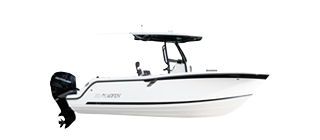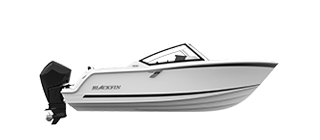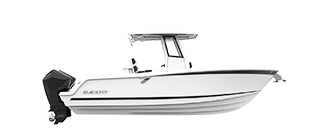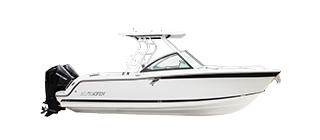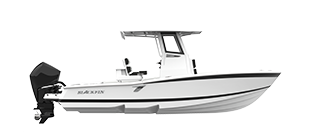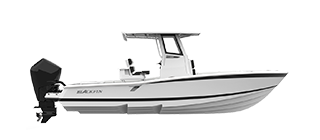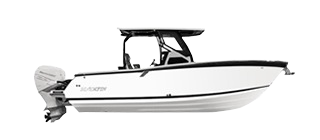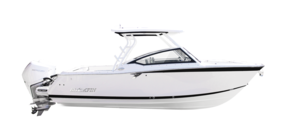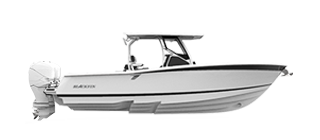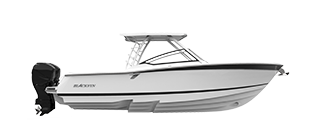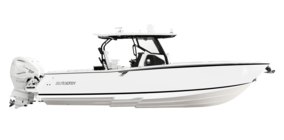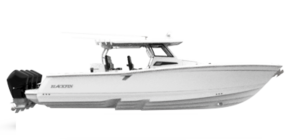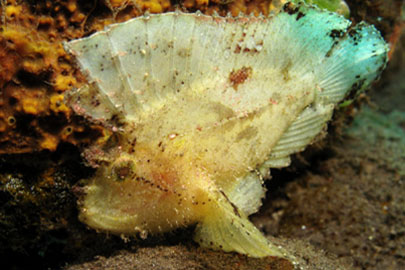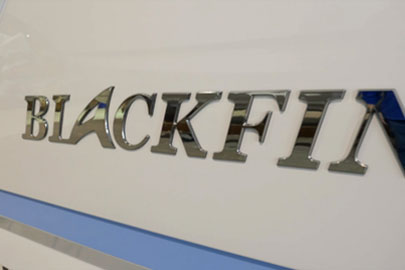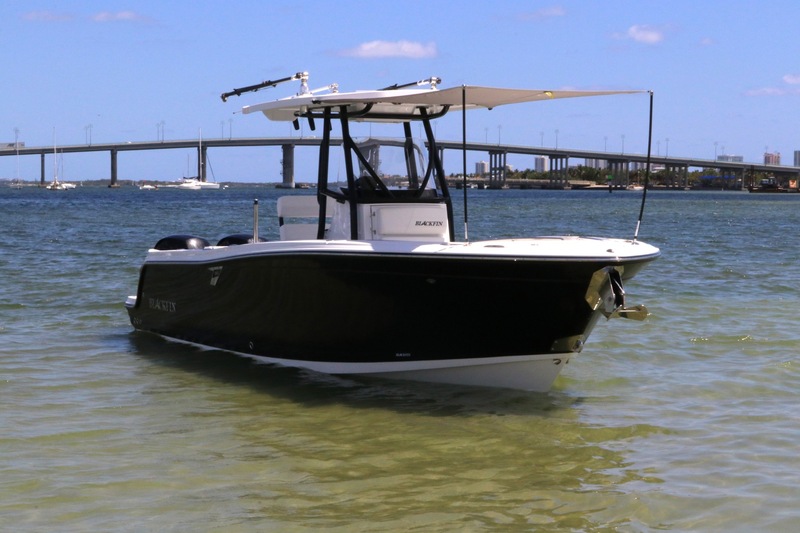
The calendar says spring, but serious offshore anglers measure seasons differently. Their year revolves around those precious months when conditions align, target species become accessible, and the opportunity for exceptional fishing materializes. As that offshore window approaches, a crucial period of preparation stands between winter storage and summer success.
For center console boat owners, this preparation phase represents both responsibility and opportunity. The thoroughness of pre-season prep directly impacts everything that follows—from mechanical reliability to fishing effectiveness to safety at sea. While the temptation to rush through maintenance tasks and get on the water quickly feels almost overwhelming, experienced captains understand that patience during preparation translates directly into confidence offshore.
Let's explore the essential steps for readying a center console boat for the demands of offshore fishing season—a comprehensive approach that transforms a dormant vessel into a finely-tuned fishing platform.
Engine Systems: The Foundation of Confidence
Nothing undermines an offshore trip faster than engine issues. Distance from shore magnifies the consequences of mechanical problems, making thorough engine preparation the cornerstone of pre-season work.
Start with the fundamentals—fresh fuel filters on both primary and secondary systems. This simple step prevents contaminants that may have settled during storage from reaching critical engine components. While changing filters, inspect fuel lines for any signs of cracking, chafing, or deterioration, particularly at connection points where movement occurs.
For outboard-powered center consoles, lower unit service should take precedence. Fresh gear oil not only provides proper lubrication but also reveals potential water intrusion issues through telltale milky discoloration of drained fluid. This visual indicator often provides early warning of seal failures before catastrophic damage occurs.
Cooling systems require particular attention after periods of inactivity. Carefully inspect water intakes for marine growth or debris that restricts flow. Consider removing and cleaning thermostats if the engine has sat dormant through winter months, as mineral deposits can prevent proper operation. The cooling passages of Blackfin's outboard options benefit from thorough freshwater flushes with manufacturer-approved cleaning solutions to dissolve scale and salt deposits that accumulate over time.
Ignition components—from spark plugs to ignition coils—should undergo comprehensive inspection. The demands of offshore operation leave little margin for ignition system weaknesses. The relative accessibility of outboard engines on center console designs makes this inspection process straightforward compared to other vessel configurations.
For boats equipped with newer four-stroke outboards, take time to check valve clearances according to manufacturer-specified intervals. This oftenoverlooked maintenance item prevents performance issues that typically emerge at high-load conditions—precisely when heading offshore or running from approaching weather.
The electrical connections powering critical engine functions deserve careful attention. Remove, clean, and protect battery terminals and engine ground connections. Inspect wire harnesses for signs of corrosion, particularly where they pass through bulkheads or near bilge areas where moisture accumulates.
Finally, test run the engine while connected to appropriate diagnostic equipment. This crucial step reveals issues like fuel delivery problems, ignition inconsistencies, or sensor malfunctions that might not trigger obvious symptoms during casual observation but could develop into significant problems offshore.
Electronics: The Modern Advantage
Today's offshore fishing success relies heavily on electronics that transform underwater environments from mysterious to manageable. The pre-season preparation of these systems ensures they deliver maximum advantage when needed most.
Begin with a methodical assessment of all transducer installations. Physical inspection should focus on secure mounting, undamaged cables, and clean surfaces free from marine growth or paint buildup that reduces sensitivity. The through-hull installations common on many center console vessels require particular attention to sealant condition and mounting security.
Software and chart updates represent a frequently overlooked preparation step. Manufacturers regularly release improvements addressing everything from interface functionality to sounder performance. Similarly, updated chart packages incorporate the latest navigation hazards, regulatory boundaries, and bottom structure information. The integrated systems available on Blackfin Center Consoles typically allow updates via simple SD card installations or wireless connectivity.
Electrical connections throughout the electronics network should undergo careful inspection, cleaning, and protection. The marine environment creates particularly challenging conditions for electrical reliability, making proper terminal protection compounds essential rather than optional. Pay special attention to radar connections, which often experience vibration and exposure that accelerates corrosion processes.
Calibration of critical sensors—especially heading sensors affecting radar overlay and autopilot function—ensures accurate information during long offshore runs. Modern center console installations typically allow calibration procedures through main display units, with step-by-step guidance simplifying what once required specialized knowledge.
Finally, create redundancy through backup systems where appropriate. Handheld GPS units, portable VHF radios, and even smartphone-based navigation apps provide essential safeguards against primary system failures. The accessibility of center console electrical systems makes integration of these backup options straightforward compared to more complex installations.
Tackle Storage and Organization: The Efficiency Equation
The difference between merely fishing and fishing effectively often comes down to equipment organization. Pre-season preparation provides the perfect opportunity to develop systems that enhance efficiency when opportunities materialize offshore.
Begin by completely emptying tackle storage areas, regardless of how wellorganized they might appear. This clean-slate approach allows both cleaning of storage spaces and critical assessment of each item's condition and continued relevance. The rod locker, tackle drawers, and storage compartments found throughout Blackfin Center Consoles provide ideal segmentation for category-based organization.
Devote special attention to terminal tackle—the hooks, swivels, leaders, and specialized components that directly contact fish. Salt exposure and humidity degrade these items during storage, often in ways not immediately visible. Discard questionable components, as the minimal savings from reusing compromised terminal tackle rarely justifies the loss of a quality fish.
For lures, conduct honest assessment regarding condition and continued utility. The natural tendency to accumulate excessive quantities actually reduces effectiveness by creating decision paralysis during critical fishing moments. Consider categorizing offshore lures into primary, secondary, and specialized options, with organization systems reflecting this prioritization for easy access.
Rod and reel combinations should undergo complete inspection and maintenance. Reel service—including drag system cleaning, gear lubrication, and line replacement—prevents the heartbreak of equipment failure during trophy encounters. The spacing and security of rod holders on center console vessels makes strategic loading possible, with most frequently used setups positioned for immediate access.
Develop specific storage areas for each fishing technique likely to be employed. The abundant storage options available in modern center console designs allows dedicated spaces for trolling equipment, bottom fishing tackle, sight casting gear, and specialized techniques like kite fishing or deep dropping. This approach minimizes transitional chaos when changing methods in response to conditions or opportunities.
Finally, create visual reference systems that communicate organization strategies to everyone aboard. Simple labeling of compartments, colorcoding of tackle categories, and logical equipment placement transforms complex offshore fishing operations into intuitive processes that require minimal explanation.
Live Bait Systems: The Biological Element
For many offshore anglers, live bait represents the difference between opportunity and success. The complex biological aspects of bait management begin with proper system preparation long before the first baitfish comes aboard.
Start with thorough cleaning of all live well components, including pumps, intakes, drains, and overflow systems. Mineral deposits, marine growth, and debris can restrict water flow, creating dead spots within circulation patterns that stress or kill baits. The accessibility of pump compartments in welldesigned center console boats allows comprehensive inspection without extraordinary effort.
Plumbing components deserve careful attention, particularly where hoses connect to fittings and pass through bulkheads. The vibration inherent in offshore operations gradually weakens these connection points, making preemptive replacement of questionable components far preferable to midtrip failures. Look specifically for stress cracks near fittings, hardening of flexible sections, and signs of leakage.
Well aeration systems require both inspection and performance testing. Beyond simply confirming operation, assess whether oxygen delivery meets the requirements of intended bait species. Different baits—from hardy pilchards to delicate threadfins—present varying oxygen demands that might necessitate supplemental aeration for optimal condition maintenance. The integrated aeration systems in Blackfin bait tanks provide adjustable flow rates to accommodate these varying requirements.
Consider water quality management options based on expected fishing scenarios. For shorter runs, simple circulation might suffice. For longer offshore trips, investigate additives that reduce ammonia buildup, stressreducing compounds that calm baits after capture, and water conditioning products that neutralize chlorine when filling from shore-based sources.
Finally, develop contingency plans for bait management during challenging conditions. Rough seas, extreme temperatures, or unexpected bait quantity requirements can all create situations where standard systems prove inadequate. Supplemental portable aeration, backup pump options, and alternative well management strategies provide insurance against conditions that might otherwise compromise bait quality.
Safety Equipment: The Non-Negotiable Category
The offshore environment leaves minimal margin for safety oversights. Preseason preparation must include comprehensive assessment of all safety systems and equipment, with replacement or upgrade of any questionable components.
Begin with the regulatory essentials—Coast Guard required equipment appropriate for vessel size and intended operating area. This includes fire extinguishers (with verified charges and appropriate mounting), sound producing devices, visual distress signals, and navigation lights. The clean installation design of center console vessels simplifies the inspection process for these fundamental items.
Life jackets deserve particular attention, with careful assessment of flotation integrity, strap condition, and appropriate sizing for anticipated passengers. Modern inflatable options offer comfort that encourages consistent wear—a critical factor considering that unworn safety equipment provides zero protection. The open deck design of center console boats makes life jacket storage and accessibility relatively straightforward compared to cabin configurations.
Communication equipment represents a critical safety category that transcends regulatory requirements. VHF radio performance (including antenna and cable condition), satellite communication options for vessels traveling beyond reliable cell coverage, and emergency beacons like EPIRBs should undergo testing and certification verification as applicable. The elevated helm position typical of center console designs generally provides excellent mounting locations for antennas and communication equipment.
First aid supplies require honest assessment regarding completeness and condition. Offshore medical incidents permit no quick access to advanced care, making comprehensive preparation essential. Consider supplementing standard kits with specialized items addressing fishing-specific risks—hook removal tools, items addressing marine stings or wounds, and materials for stabilizing injuries during potentially lengthy returns to shore.
Navigation safety extends beyond electronics to include backup systems essential during equipment failures. Physical charts covering intended operating areas, backup GPS options, and even basic plotting tools provide crucial redundancy. Similarly, alternative power sources for critical systems— whether dedicated batteries, solar options, or engine-independent generators—deserve consideration based on offshore operation distance.
Final Preparations: The Pre-Launch Checklist
As launch day approaches, several final preparation steps transform a wellmaintained vessel into an offshore fishing platform ready for peak performance.
Fuel system management should include both quality and quantity considerations. Treating stored fuel with stabilizers and biocides prevents degradation and biological contamination that can clog filtration systems. Additionally, developing clear understanding of consumption rates under various conditions allows confident range planning that incorporates appropriate safety margins.
Trailer-launched vessels benefit from thorough inspection of supporting equipment. Wheel bearings, lighting systems, winch mechanisms, and safety chains all require assessment after winter storage periods. For larger center console boats, coordination with marina staff regarding launch timing and process prevents last-minute complications that delay departure.
Weight distribution planning—considering everything from passenger placement to tackle and equipment positioning—optimizes both performance and fuel efficiency. The design of center console vessels makes weight management particularly important, as improper distribution can significantly impact handling characteristics, especially in challenging sea conditions.
Weather planning tools, from traditional forecasting services to specialized marine weather applications, should be updated and tested. Developing familiarity with these resources before critical decision points prevents information gaps when evaluating rapidly changing offshore conditions. The multiple electronic mounting options on Blackfin helm stations provide ideal positioning for dedicated weather monitoring displays.
Finally, create departure timeline working backward from intended fishing period. This approach ensures adequate time for each preparation phase without creating rushed equipment adjustments or safety oversights. For offshore fishing, the quality of preparation directly impacts the quality of experience, making methodical approaches invaluable.
The Preparation Mindset: Beyond Mechanical Readiness
The most successful offshore anglers approach season preparation as more than mechanical obligation—they see it as the foundation of confidence that transforms fishing from hope-based activity to methodical process. This mindset distinguishes casual participants from consistent producers.
Knowledge preparation parallels physical readiness. Study seasonal patterns of target species, monitor reports from early-season trips, and develop understanding of how environmental factors likely to influence initial offshore excursions. This intellectual preparation creates decision frameworks that maximize opportunities when conditions align perfectly—often during narrow seasonal windows.
Team preparation ensures everyone aboard understands both responsibilities and expectations. From basic operation orientation to complex procedures like managing multiple hookups or responding to emergency scenarios, precommunication eliminates confusion during critical moments. The open layout of center console designs facilitates this preparation by allowing clear demonstration of equipment locations and operational processes.
The methodical approach to vessel preparation described throughout this discussion ultimately creates something beyond mechanical readiness—it develops the justified confidence necessary for pushing boundaries, exploring new areas, and capitalizing on opportunities that define truly exceptional offshore fishing experiences. The framework remains consistent whether preparing a first-season vessel or well-established fishing platform.
When preparation receives the attention it deserves, the transition from maintenance mode to offshore action happens seamlessly. The center console boat—with systems optimized, equipment organized, and safety measures verified—transforms from static object to dynamic platform precisely when seasonal opportunity emerges. Few experiences in fishing match the satisfaction of that first run offshore in a vessel prepared for whatever challenges and opportunities the new season might present.
Bookmark & Share
User Comments
Be the first to comment on this post below!
Previous Article
Most Popular Articles
- Blackfin Fishing Boats - The Legend Lives On | Blackfin Boats
- Blackfin 272 CC Boat Test - By Lakeland Boating Magazine
- May Fish Trial of the Blackfin 272CC Model | Blackfin Boats
- Ten Ways to Keep Your Blackfin Upholstery Like New | Blackfin Boats
- Blackfin Boats Premier Debut Event
- Artistry in Cleats Can Make or Break a Fishing Trip | Blackfin Boats
- The Blackfin 272CC ? Ranked Among The Very Best Fishing Boats of 2018!
- How to Acquire Your Boat Captain?s License in Florida


